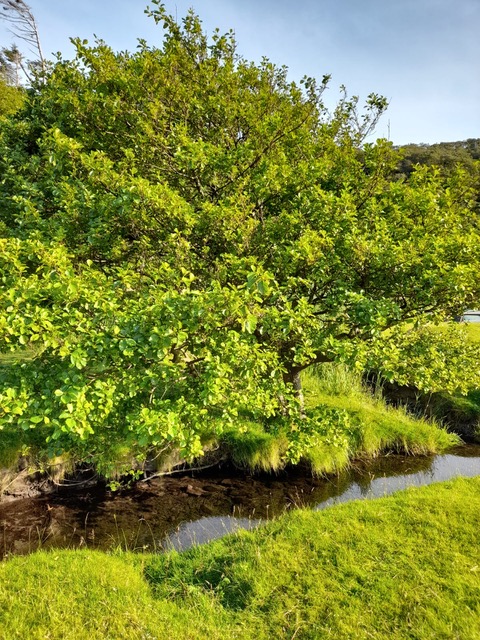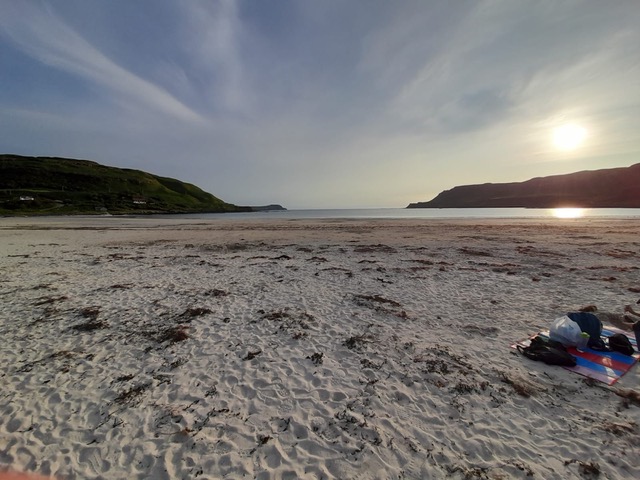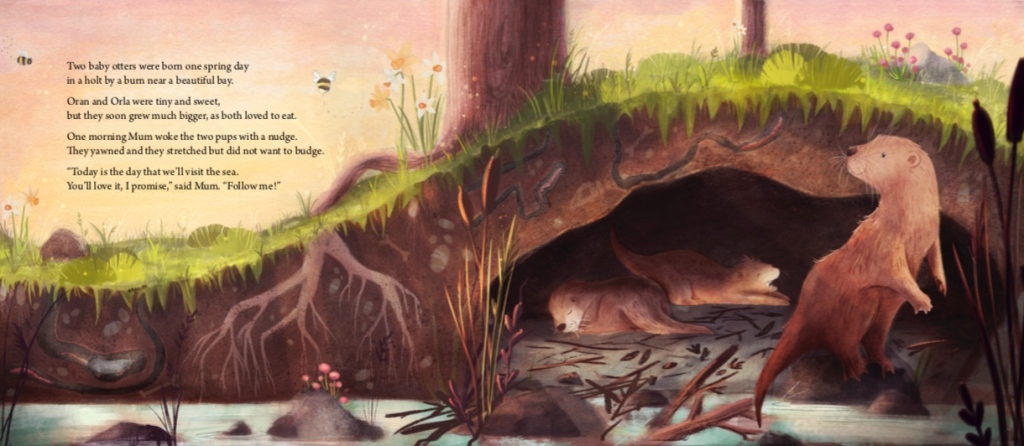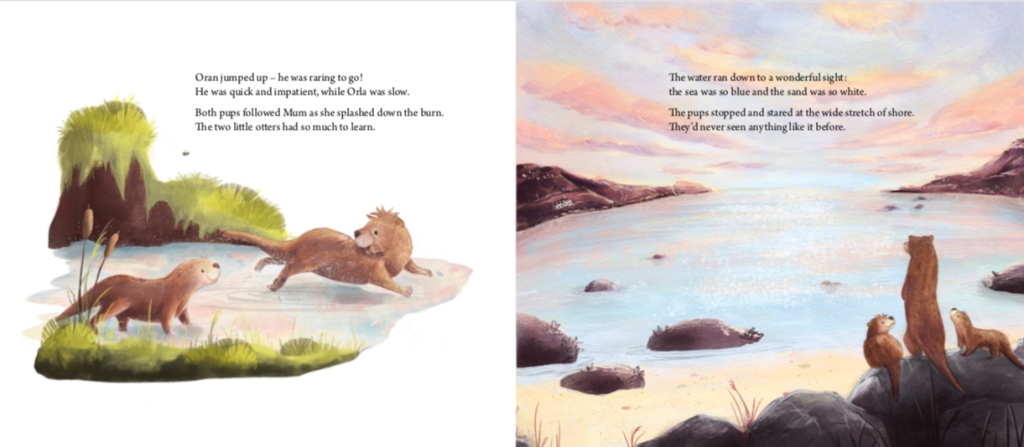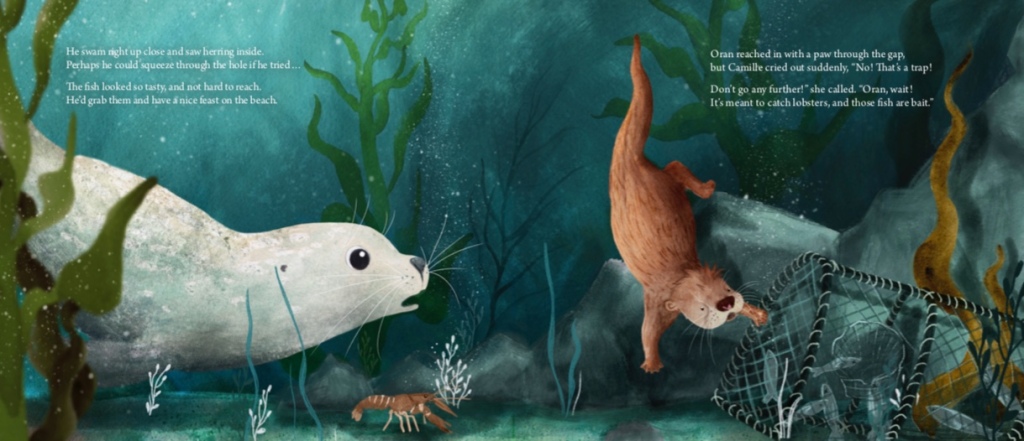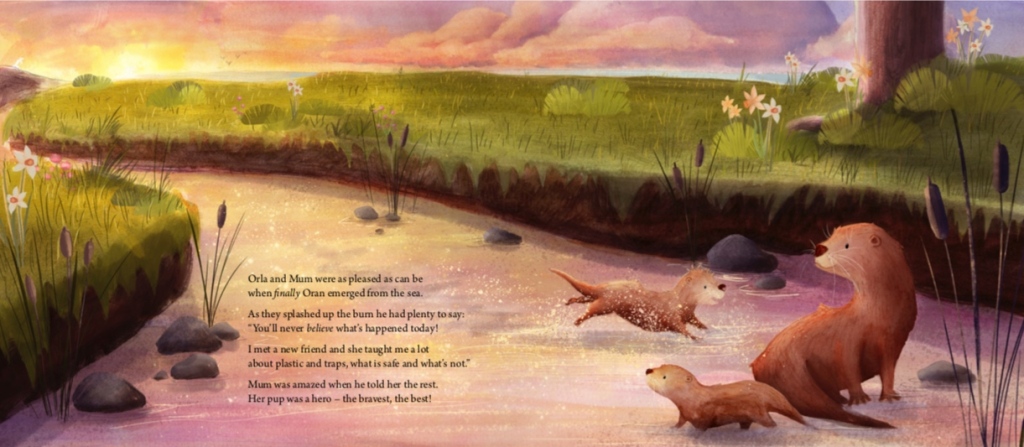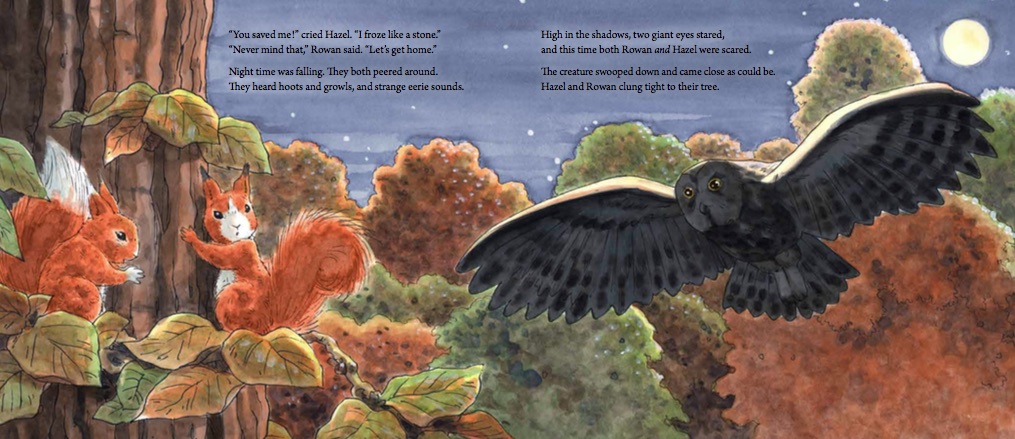My latest Picture Kelpies book came out earlier this year, and I’m delighted with the expert illustrations of Abigail Hookham, a graduate of Goldsmiths, University of London. Oran the otter spends a lot of time underwater, and Abigail is brilliant at capturing the light coming through water from above, as well as dark, stormy seas when things get scary.
Oran the Curious Otter is a rhyming story about a young river otter who goes for his first trip to the open sea with his mum and his sister Orla. They live on the isle of Mull, and arrive in a wide and beautiful bay – Calgary Bay. Naturally, to do proper research for the book, I had to spend some time on Mull, taking photographs of a tree overhanging the bank of a stream, the journey downstream to the shore, and the wide expanse of the bay.
Abigail has captured all these features in her illustrations, starting with the otters’ holt by the stream:

Abigail first shows the sun filtering through the water in a bright and happy moment when Oran meets Camille. Then, when there is danger, Abigail uses darker colours to convey a more worrying atmosphere. The most distressing moment comes when Camille is caught in a fishing net and Oran has to rush to her rescue. Abigail makes the sea grey and stormy to give us a sense of danger and uncertainty.
Camille is rescued, and Oran rejoins his mum and sister at the end of a long and busy day. The storm has passed and the clouds are turning pink and gold as the sun sets. With this illustration, Abigail creates a sense of calm using warm, mellow colours. The final image shows Mum and the two pups curled up in their holt, safe and sound.
Like all my Picture Kelpie stories, this one has a happy ending! Oran has a new friend, and he has learned a lot about sea creatures and underwater dangers. I hope Abigail’s amazing illustrations will inspire readers to visit the isle of Mull for a bit of otter spotting!


